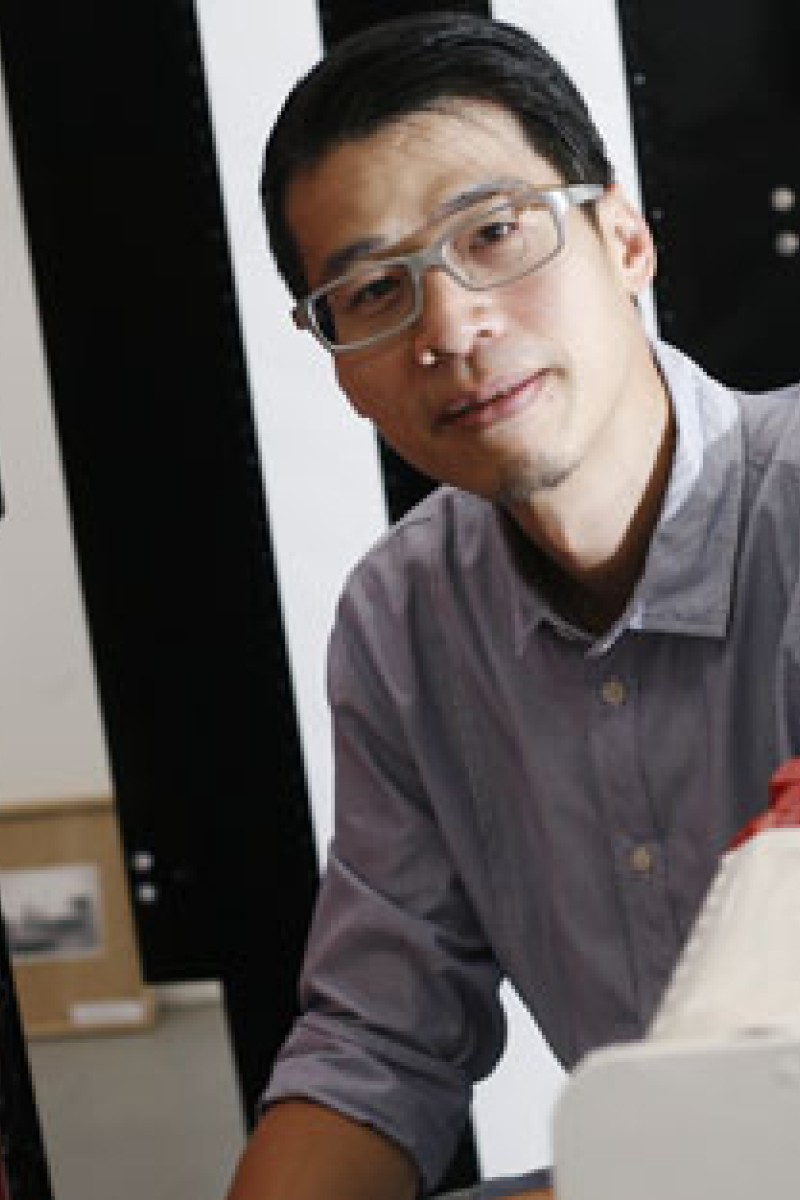
 iii
iiiSunny Tse talks to Kacey Wong about his life-changing move from architecture into installation art
Kacey Wong Kwok-choi's studio is an inspiring space of colourful robots, sculptures, framed snapshots of his large-scale installations and a cosy sofa on which you can sit back, relax and enjoy the sea view. He calls it the Detective Room because it is where he likes to investigate his mind.
'Installation art is using space to tell a story, to create an experience,' says Wong. 'Inside that space is total freedom. Anything from objects, sound and even temperature can be put in that space.'
Unlike traditional arts such as painting, installation art is a spatial concept and is free of restrictions in terms of form and medium. The idea of a 'bigger, unknown universe' fascinated the former architect so profoundly that he gave up a high-flying job for a Master's degree in arts about 10 years ago.
'Working from design to management positions, I had a full picture of what architecture is in Hong Kong,' says the artist. 'It's all the same formula: maximise profits. I found it boring and ... a total waste of life.'
But he did not change his life without going through a psychological struggle.
'My mind played tricks on me and made me think about all the worst scenarios, but soon I had had enough of negative thoughts and decided to simply 'jump into the fire',' he says.
Today he is a dedicated artist and part-time professor who hopes to inspire hopeful young artists through his works and lectures.
'I'm very sensitive about not only the artistic object itself, but also how it's placed in a certain environment,' says Wong.
He believes his artworks are more than an act of creativity. He sees them as three-dimensional, tangible versions of his thoughts which will last forever. Yet, producing even the most brilliant artwork would not be worthwhile without appreciation and the occasional fan letter. He says these bring him more satisfaction than selling his works for a lot of money.
'Selling a piece of work is like selling a child, selling a part of me. Knowing that I will not see it again makes me worry. It hurts me,' he says, recalling the bittersweet experience of selling one of his proudest works, Tricycle House. It was selected to represent Hong Kong at the Venice Architectural Biennale and bought by a private collector.
But he hasn't always been so lucky in finding homes for his works. Even though he tries to keep all of them, some of his large-scale installations end up in the landfill.
'It's a shame there isn't a collective archive to preserve works which show the culture of a certain time and space. Sometimes, being an artist here is like doing charity work: you are doing the city a favour to give it what it lacks.'
For Wong, a lack of government support is frustrating because Hong Kong has a unique post-colonial and East-meets-West culture that can offer something different to the globalised world of art. He says the city should make use of this unique environment to help the local art scene thrive.
But first, according to Wong, Hongkongers need to learn the language of art and understand art by reading more. They also have to realise that art is not a way to get extra academic credit or for exams. It is a creative process to be enjoyed.
'Take the first step, and be curious,' Wong says. 'Dream big and enjoy the process of art-making. If you are committed, nothing can stop you.'
Organised by the Hong Kong Arts Development Council and co-organised by the Hong Kong Academy for Performing Arts, the Arts Ambassadors-in-school Scheme aims to nurture artistic talent in young people and promote art in the community. All arts ambassadors must be nominated by school principals before December 4.
| Learn more about the Arts Ambassadors-in-School Scheme here |
<!--//--><![CDATA[// ><!-- PDRTJS_settings_776902 = { "id" : "776902", "unique_id" : "default", "title" : "", "permalink" : "" }; //--><!]]>